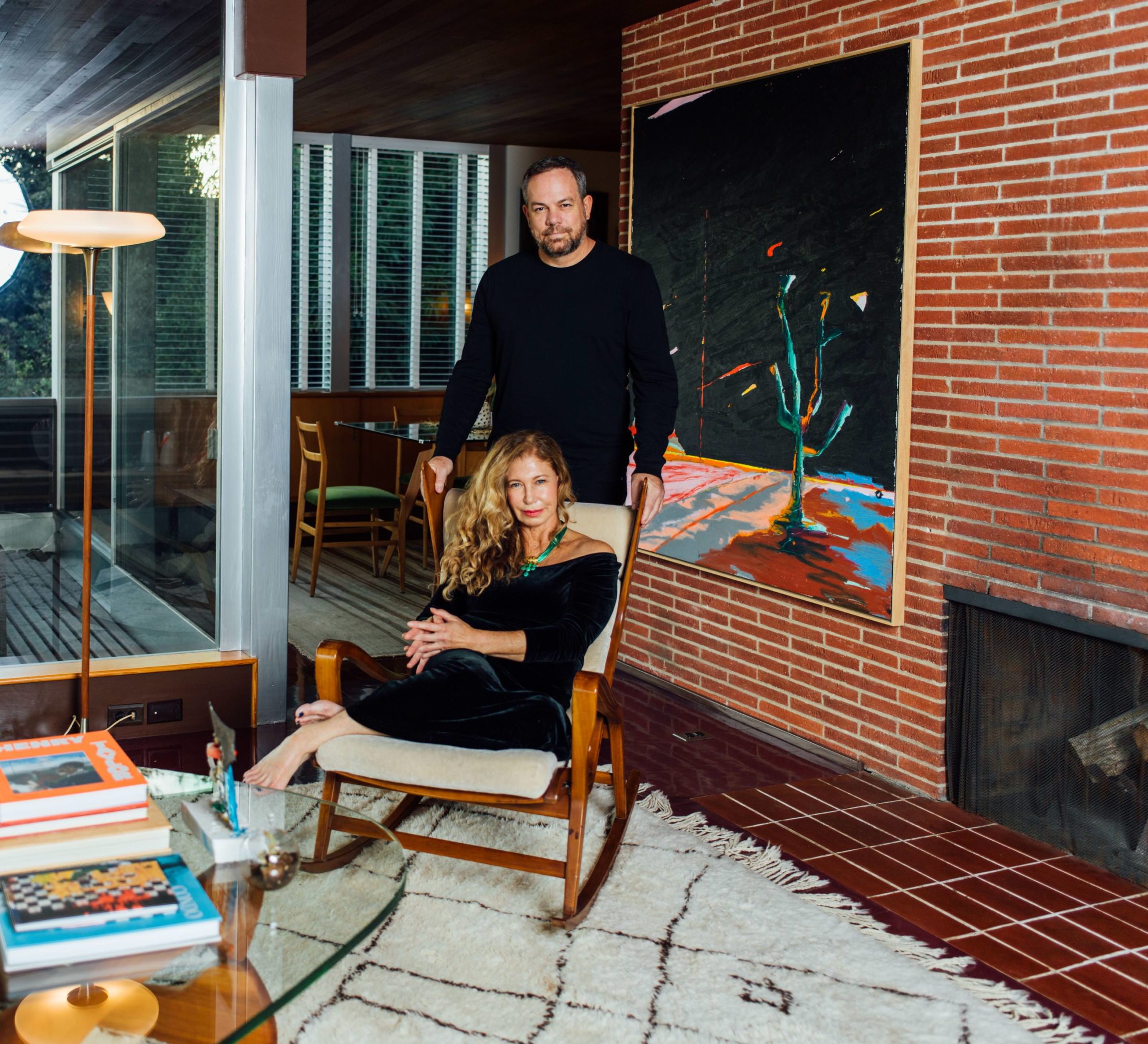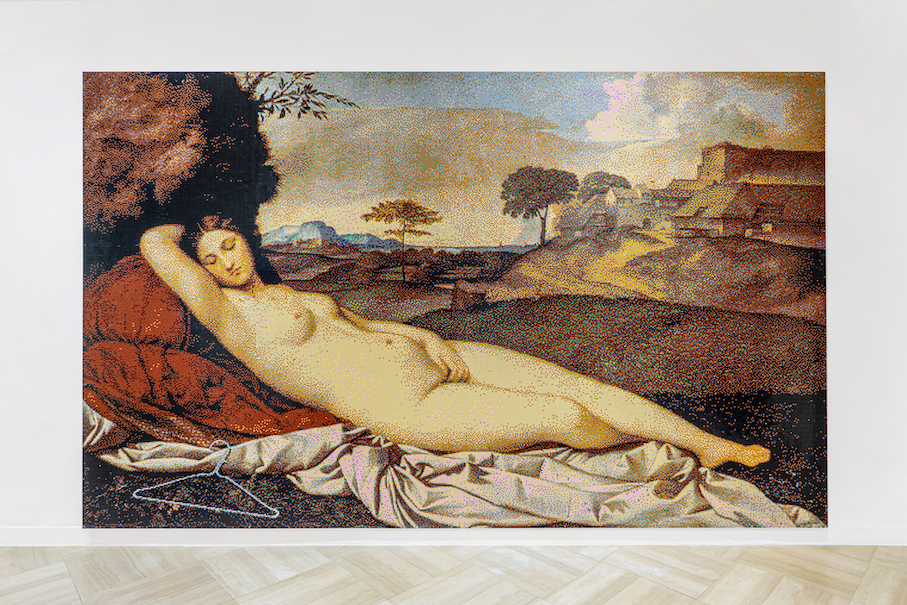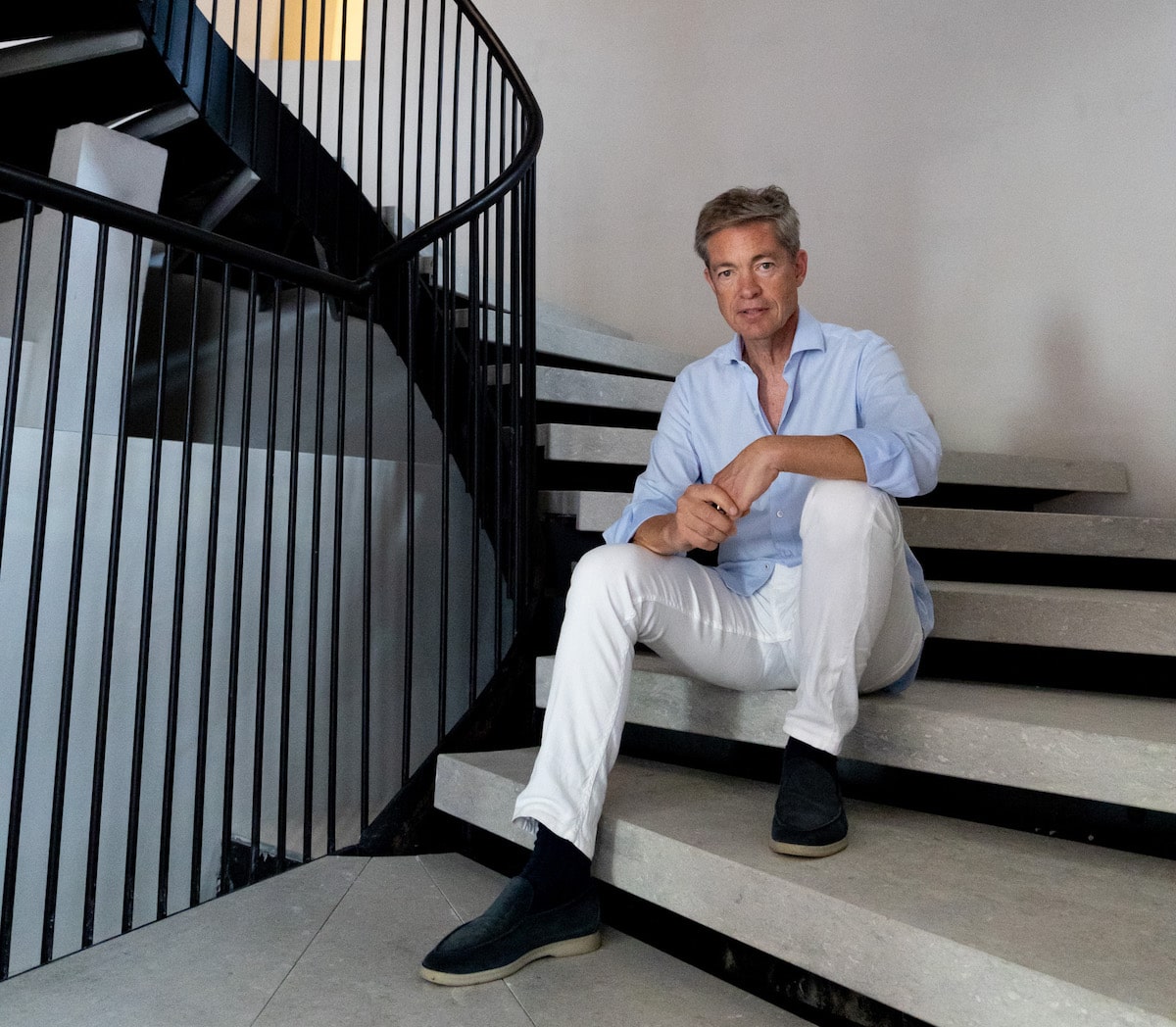In the Polish Pavilion in the Giardini at the Venice Biennale is a multi-screen video by C.T. Jasper and Joanna Malinowska, curated by Magdalena Moskalewicz. It shows Stanislaw Moniuszko‘s opera Halka, which premiered in Warsaw in 1858, being performed on a dusty street in the village of Cazale in Haiti and being watched by locals. Titled Halka/Haiti 18°48’05″N 72°23’01″W, the 82-minute-long video was inspired by Werner Herzog‘s film Fitzcarraldo (1982) about the failed ambition of Brian Sweeney Fitzgerald, an Irishman, to build an opera house in a rainforest in Peru. In this interview, the artists explain why they decided to bring Halka to Haiti.
WHITEWALL: What was the starting point for Halka/Haiti 18°48’05″N 72°23’01″W?
JOANNA MALINOWSKA: The starting point was Werner Herzog’s Fitzcarraldo (1982), starring Klaus Kinski as a man trying to build an opera house in a rainforest in Peru. But he fails. What we were trying to do was make his mission come true in a geopolitical situation. We didn’t have the appetite to build an opera house but wanted an opera to be performed. We were also destroying the notion of the romantic character that needs to fail.
Cazale is a specific village with a complicated historical background. In the 1800s, Poland didn’t exist on the map and was divided between Russia, Prussia and the Austria-Hungarian empire. The Polish people sought Napoleon’s help and in 1802-1803 he sent Polish troops to Haiti, which was France’s colony at the time, to fight the slave rebellion. The Polish soldiers decided to switch sides and join the rebels because they were fighting for the independence of their country in the same way that the Polish people were fighting for the independence of Poland. When Haiti became an independent state, the Polish got honorary citizenship and became honorary blacks because most white people were killed after the revolution. After 200 years, the Haitians still identify with Poland on a very basic level and the genes are still present. There are people who have blue eyes, blond hair or very Slavic features. They consider themselves Polish even if they don’t know much about Poland because they don’t have much confrontation with the outside world. So we decided to take them the opera that was written at around the same time as when the Polish soldiers were sent to Haiti.
WW: How many times did you go to Cazale to work on the project?
C.T. JASPER: We went there four times. The first two trips were research-based about how to pull all the different strings together and solve all those different things. From a conceptual point of view, it was clear that we didn’t want to repeat the act of the colonial movement again, of white people going to another country.
JM: We wanted to build a relationship with the people from the village. We didn’t want to be invaders. And they have their pride. They wouldn’t be interested in just anybody coming to them and saying, “I want to do an opera in the middle of your village.”
WW: What preparations did you make?
C.T.J: Everything happened out of the blue. Somebody from a cultural organization in Port-au-Prince, the capital of Haiti, introduced us to people. At Cazale, it was about talking to people and building trust. People became interested in the project and at some point they wanted to help.
WW: What obstacles did you encounter?
JM: When we first went there, nobody was interested in us because everybody was watching the Madrid versus Barcelona soccer match on big Plasma screens. They were so engaged that they didn’t give a damn about our visit.
C.T.J: It was really surreal. We were begging them to listen to us but they were so involved in the soccer game that we had to wait for it to end.
WW: Who participated and performed in the opera?
C.T.J: The orchestra from Port-au-Prince learnt the score and the dancers are participants from the village. We really wanted to remove this demarcation line between the public and the theatre, between the actors and the viewers. There were people in the audience recording it with their iPhone and iPad. I’d call it an historic panorama.
WW: Over what length of time did you film the opera being performed?
FM: We filmed it all during one day. We thought, “We’ll film it in one day and record whatever happens, bad or good.”
WW: Will you go to Cazale to show the video to the village?
C.T.J: Yes, we’re going to Haiti in November to show them the piece.
FM: We feel very responsible that we established this relationship with them and we want it to continue, especially as we know that there were other groups of anthropologists and scholars who made promises that were never realized.
C.T.J: After our first trip, our goal was that it wouldn’t be a case of, “You came, you left.”
The Venice Biennale, “All The World’s Futures,” runs until November 22, 2015.










